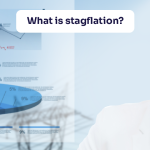Understanding the bid-ask spread is essential for making informed trading decisions on any platform. However, what is a bid-ask spread? It represents the gap between the maximum price a buyer is ready to pay for a stock (bid) and the minimum price a buyer is willing to accept (ask). This spread not only affects your trading costs but also indicates how liquid or active a particular stock or asset is.
Whether you're a beginner or an experienced investor, mastering the bid-ask spread can significantly enhance your understanding of share market investments and help you make more informed decisions.
The bid-ask spread calculation is simple but critical in understanding market pricing. It is determined by taking the ask price and subtracting the bid price from it.
Bid-ask spread formula: Bid−ask spread = Ask price−Bid price.
For example, if a stock has a bid price of ₹100 and an ask price of ₹102, the bid-ask spread would be ₹2. Generally, a smaller spread indicates a more liquid market. However, in less liquid markets, the spread tends to be wider, increasing the costs for traders.
When making share market investments, it is crucial to consider the bid-ask spread, as it affects the overall transaction cost. A narrower spread means less cost when entering or exiting a trade, which can improve profitability. Conversely, a wider spread increases the cost, making trades less favourable.
On a trading platform, the spread is usually displayed next to the stock price, helping investors quickly assess the cost of buying and selling. Understanding the spread can help you choose the right moment to execute a trade.
Several factors contribute to the bid-ask spread. One of the main factors is liquidity. Markets with higher liquidity, such as large-cap stocks or currency pairs, tend to have narrower spreads, as more participants are willing to buy and sell at competitive prices. On the other hand, less liquid assets often have wider spreads due to fewer buyers and sellers.
Other factors include volatility and trading volume. During times of high volatility, the spread may widen as the risk for both buyers and sellers increases. Similarly, low trading volume can lead to a wider spread as fewer trades are taking place.
For traders, the bid-ask spread means the cost difference between buying and selling an asset. In a practical example, if you wish to buy shares at the ask price and then sell them at the bid price, the spread represents the immediate cost of that transaction. Therefore, traders must account for this spread in their strategies, particularly when trading in less liquid markets where spreads are wider.
Understanding how to use the bid-ask spread effectively can help in minimising costs and maximising gains, especially when using a trading platform for frequent transactions.
Let's understand it better by looking at a bid-ask spread example. Suppose a stock is listed on a trading platform with a bid price of ₹500 and an ask price of ₹503. The bid-ask spread here is ₹3, which indicates a relatively tight spread. This tight spread suggests high liquidity, making it easier for investors to execute trades quickly with minimal price slippage.
In contrast, if another stock has a bid price of ₹1000 and an ask price of ₹1010, the spread of ₹10 indicates a wider gap. This wider spread may be due to lower liquidity, and investors might face higher transaction costs when buying or selling this stock.
To minimise the impact of the bid-ask spread, traders can use various strategies, such as placing limit orders instead of market orders. A limit order lets traders specify the exact price at which they want to buy or sell, allowing them to avoid paying the broader spread.
Additionally, choosing to trade during times of high liquidity, such as during market opening hours, can reduce the impact of a widespread. In the Indian share market, these are typically the times when liquidity is at its highest, resulting in narrower spreads.

Revisiting the Gold-Silver Ratio Amid Silver's Outperformance
3 min Read Dec 22, 2025
Midcaps: Sweet Spot or Danger Zone? | What HSBC MF’s Cheenu Gupta Thinks | Ventura Spotlight
3 min Read Dec 17, 2025
Understanding Option Pin risk near expiry
3 min Read Dec 12, 2025
EPS in the Stock Market
3 min Read Dec 12, 2025
What is stagflation?
3 min Read Dec 10, 2025